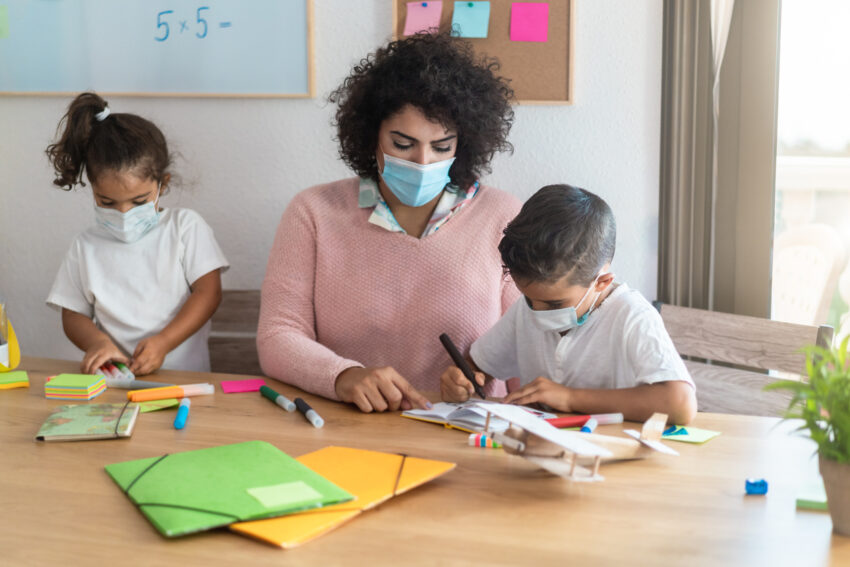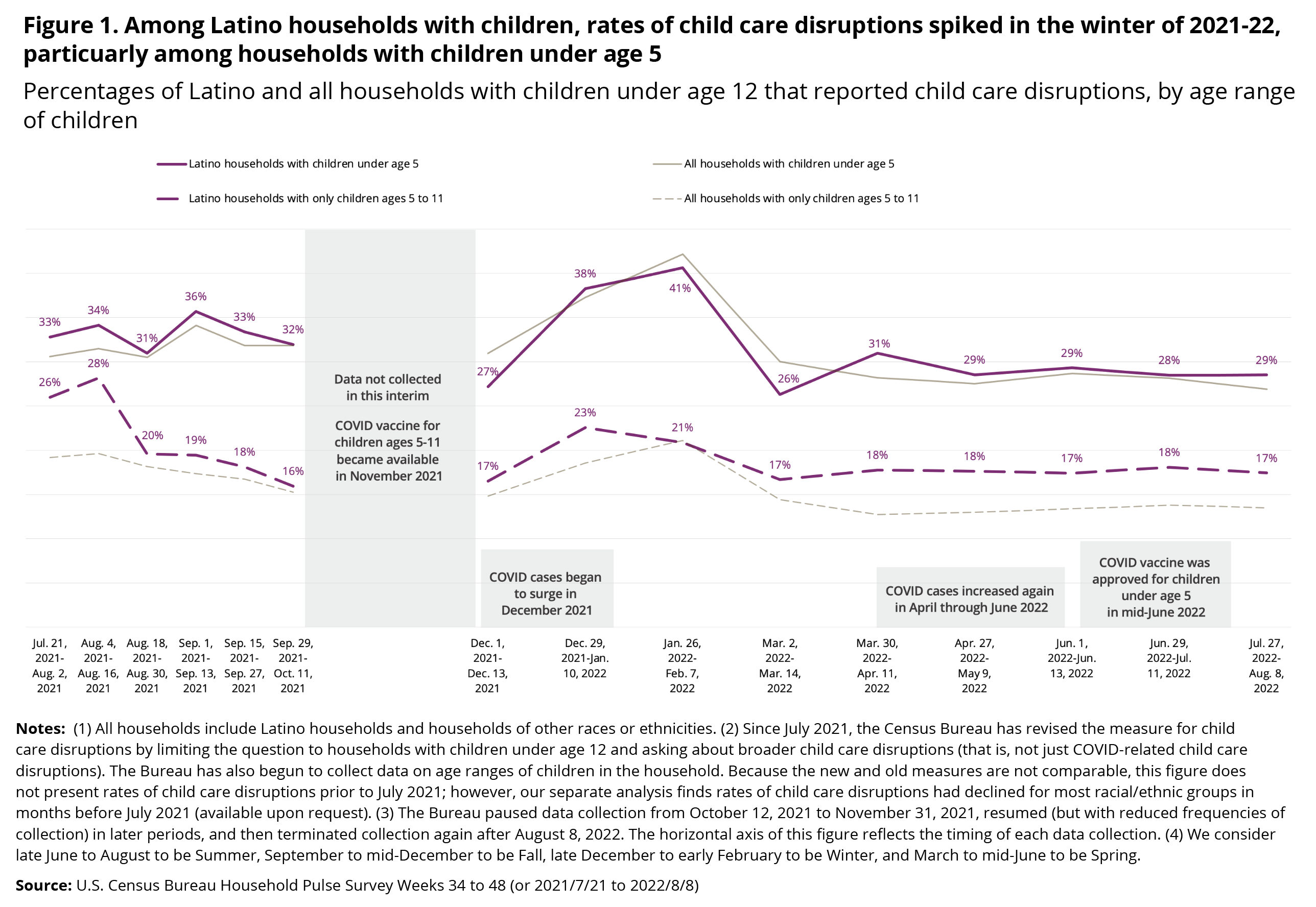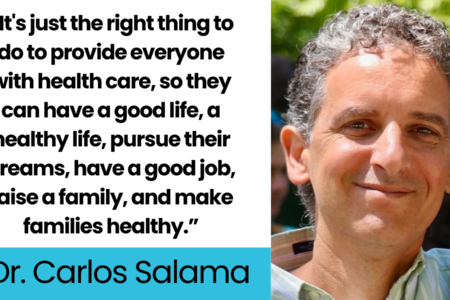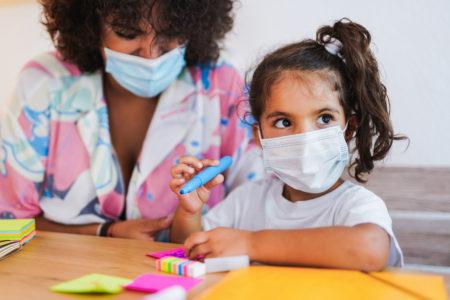
Share On Social!
Latino families with children are still experiencing COVID-19 pandemic-related disruptions to their childcare arrangements, according to a new data analysis from the National Research Center on Hispanic Children and Families (NRCHCF).
Childcare disruptions are defined as the inability of any children in a household to attend a care arrangement because of closure, lack of availability or affordability, or safety concerns.
From summer 2021 to summer 2022, these childcare disruptions remained prevalent among Latino households with children younger than 12, particularly those with children younger than 5, according to the NRCHCF analysis.
Let’s explore these disruptions brought on by the COVID-19 pandemic and how it continues to impact Latino families today.
The State of Childcare Disruptions on Latino Families
Latino households with children younger than 12 were about as likely as all households with children to experience child care disruptions, according to the NRCHCF analysis.

However, in analyzing data from US Census Bureau’s recent Household Pulse Survey, NRCHCF found that Latino households with only school-aged children (5-11) experienced an increase in childcare disruptions in winter 2021.
By spring and summer of 2022, the numbers plateaued around 17%.
“Among the latter group of households, rates of child care disruptions hovered around or over 30 percent and temporarily surged to 40 percent in December 2021, when COVID cases spiked as a result of the Omicron variant,” according to the NRCHCF analysis.
Latino parents and caregivers are often part of working families that heavily depend on childcare.
“Child care is a critical support for working families that allows parents to pursue opportunities for employment and economic mobility,” according to a 2021 NRCHCF research overview.
The Impact of Childcare Disruptions on Latino Families
Childcare costs are already a burden on many families, regardless of race/ethnicity.
The national annual average price of childcare for 2022 was $10,853, according to Child Care Aware of America. They reported that it would take 10% of a married couple with children’s median income to afford this national average price and 33% of a single parent with children’s median household income to afford this national average price.
The high price of childcare proved more costly for Latinos, who were more likely to lose or leave a job in response to childcare disruptions, according to the NRCHCF analysis.
A larger percentage of Latino households cut work hours (33% vs. 26%), used paid leave (26% vs. 21%), and left or lost their job (24% vs. 20%) to respond to disruptions in child care in 2022.
Similarly, a smaller percentage of Latino households used paid leave (26% vs. 34%) or supervised their children while working (19% vs. 27%), and a higher share reported leaving or losing their job (24% vs. 19%), compared to other households.
A low-income Latino household may face longer disruptions if they are unable to pay for alternative childcare arrangements.
The situation is already sending more Latinas into poverty.
“In addition, cutting work hours to respond to care disruptions may translate into foregone earnings for Latino households, which often include workers who have little paid time off or who work in part-time jobs,” according to the NRCHCF analysis.
The Need for More Research on Childcare Disruptions among Latino Families
The NRCHCF analysis also highlights that, while the Census survey data does enable examining fluctuations in childcare disruptions among all households, it doesn’t allow a direct examination of the nature of care disruptions or the reason for a household’s response.
This analysis further suggests the need for additional data to examine structural inequality in the labor market, including factors like:
- access to paid sick leave, paid family leave
- flexible work arrangements (e.g., telework and flextime)
- households’ ability to access childcare
- school and care policies such as school hours and stay-home policies
Latino and low-income families face worse health outcomes because they are disproportionately burdened by structural and systemic inequities – substandard schools, poor housing, costly transportation, unequal pay, nutrient-poor food, and childhood trauma.
“These structural factors affect whether and how Latino households experience child care disruptions, and how households that do face care disruptions are able to respond,” according to the NRCHCF analysis.
Digging Deeper and Taking Action for Childcare Equity
Along with the need for more data to get a better outlook on the inequities faced by Latinos and other minority households, organizations like Child Care Aware of America are pushing for more federal and state childcare funding.
“Often, the prices families pay also do not cover the true cost providers face to provide high-quality child care, especially for infants and toddlers. Additional investment is needed to fill this gap,” according to the organization.
Parents and caregiver are also encouraged to explore their state data from the Child Care Data Center to access data to share with others, including lawmakers in helping to shape childcare.
Those interested in taking action can also access Child Care Aware of America’s social media toolkit to spread helpful information and data to others within your network.
You can also help promote affordable childcare and equitable opportunities for Latinas and all people.
Select your county and get a Health Equity Report Card by Salud America! at UT Health San Antonio. In your report card, you will see maps, data, and gauges to compare health equity issues, including socioeconomic status, to the rest of your state and nation.
You can email your Health Equity Report Card to local leaders to stimulate community change. Use the data in your materials or share on social media to raise awareness.
By The Numbers
142
Percent
Expected rise in Latino cancer cases in coming years




[…] The pandemic is another chapter in the bitter story of American racism and inequality. Black and Latinx people are being infected and are dying at much higher rates than white Americans. Many people of […]
[…] coronavirus has killed over 61,000 Latinos in America according to the CDC, accounting for over 18.2% of the total COVID deaths in the […]
[…] Whereas Hispanics make up 11% of D.C.’s inhabitants, they signify 19% of the COVID cases, and 14% of the deaths. Equally, 46% of D.C.’s residents are Black, they usually make up an alarming 75% […]
[…] and historical mistreatment. According to the U.S. Centers for Disease Control and Prevention, Latino and Black American communities are three times more likely to become infected with […]
[…] Covid pandemic has hit the Latino community particularly hard, and data from the nonprofit health equity advocacy group Salud America! shows Latinos lead in the 0-24 age […]
[…] the pandemic, Latinos took major blows, both in terms of COVID-19 cases and also from the economic recession under former President Donald Trump. Nearly half (49%) of […]
[…] the positive trend, the harm may have already been done. The pandemic has disproportionately impacted Latino communities. Reuters reported that election-related or political disinformation that […]
[…] pesar de la tendencia positiva, es posible que el daño ya esté hecho. La pandemia ha impactado desproporcionadamente Comunidades latinas. Reuters informó que la desinformación política o relacionada con las […]
[…] residentes blancos muestran una tasa mucho más baja con 10 muertes por cada 100,000 habitantes(8 9) . Los afroestadounidenses por su parte, denuncian subsistemas de salud que les segregan […]
[…] https://salud-america.org/coronavirus-case-rates-and-death-rates-for-latinos-in-the-united-states/ […]
[…] https://salud-america.org/coronavirus-case-rates-and-death-rates-for-latinos-in-the-united-states/ […]
[…] communities have the second-highest number of COVID-19 cases in the U.S. They’re also more likely to become hospitalized and die from the disease than other […]
[…] total, around 160,000 Latinos were killed by COVID-19. This accounts for 16% of the 1 million deaths in the country. The […]